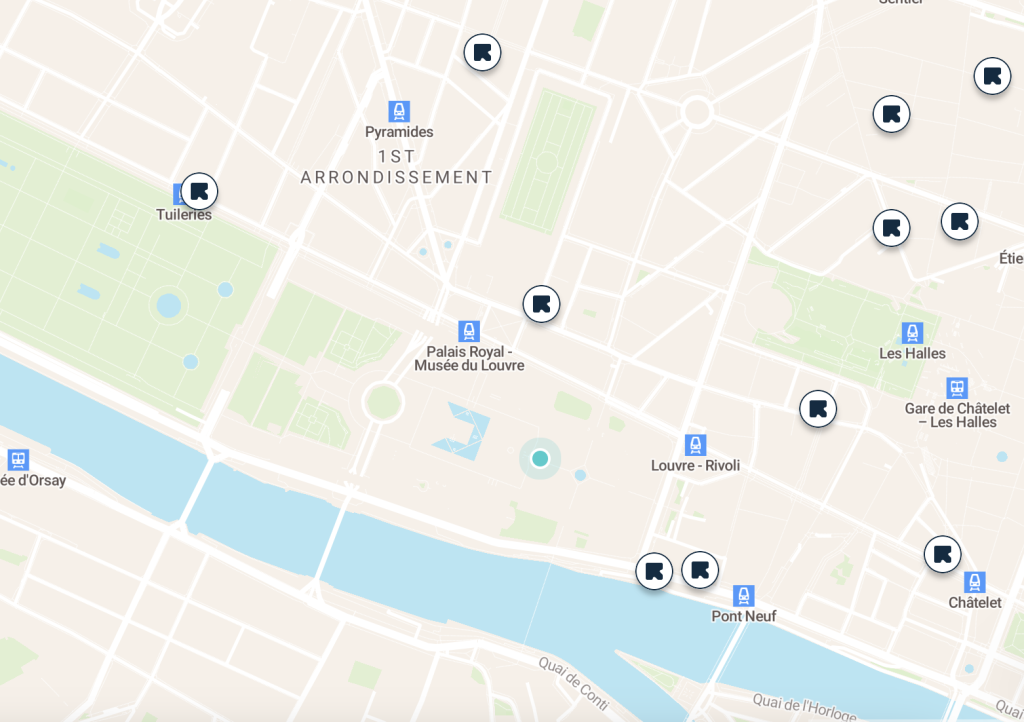The Louvre Museum, one of the world’s most renowned art institutions, attracts millions of visitors annually to its iconic galleries in the heart of Paris. Housing priceless masterpieces spanning millennia of human creativity, the museum offers an unparalleled opportunity to explore and appreciate the rich tapestry of global art and culture. However, navigating this extraordinary institution can be challenging when encumbered by heavy luggage. Fortunately, the Louvre and its surrounding areas offer convenient luggage storage solutions, ensuring you can fully immerse yourself in the museum’s wonders without the burden of carrying your belongings.
Are bags allowed inside the Louvre?
The Louvre has implemented a strict policy regarding bags and luggage to ensure the safety and preservation of its priceless collections. Large bags, suitcases, and backpacks are not permitted inside the museum galleries. Visitors are welcome to bring small bags and handbags that do not exceed the maximum dimensions of 55 x 35 x 20 cm (21.7 x 13.8 x 7.9 inches). Any bags exceeding these dimensions must be stored securely before entering the museum.
Can I store my luggage at the Louvre?
Yes, the Louvre does provide luggage storage facilities for visitors within its premises. However, these facilities are limited and can fill up quickly during peak hours. To ensure a seamless and enjoyable experience, it is recommended to plan ahead and consider alternative luggage storage options in the vicinity of the museum.

How big are the lockers in the Louvre?
The Louvre offers lockers in various sizes to accommodate different types of bags:
– Small lockers: 35 x 35 x 50 cm (13.8 x 13.8 x 19.7 inches)
– Medium lockers: 35 x 55 x 50 cm (13.8 x 21.7 x 19.7 inches)
– Large lockers: 55 x 55 x 50 cm (21.7 x 21.7 x 19.7 inches)
Please note that availability can be limited, especially during peak hours.
Louvre luggage storage map

Radical Storage: recommended option for Louvre luggage storage
After evaluating various factors such as pricing, security, availability, and customer service quality, Radical Storage emerges as the top luggage storage provider near the Louvre. Here’s why:
1. Convenient Locations: Multiple storage points situated within a short walking distance from the Louvre.
2. Affordability: €5 per bag per day, providing a cost-effective alternative to other storage options.
3. Robust Security: Vetted storage locations with a €3000 security guarantee per item.
4. Seamless Experience: Simple online reservations and quick check-in/check-out process.
5. Exceptional Customer Support: Multilingual 24/7 customer support available.
6. Local Insights: Storage hosts can provide helpful local information.
How to book luggage storage
Booking luggage storage with Radical Storage is straightforward:
1. Use their app or website to find nearby storage locations.
2. Select a suitable location and book your storage.
3. Receive a confirmation with location details and instructions.
4. Drop off your luggage at the chosen location.
5. Collect your belongings at your convenience within the booked timeframe.

Why luggage storage apps are better than lockers?
Luggage storage apps offer several advantages over traditional lockers:
1. Flexible locations: Multiple storage points around the city, not just at the museum.
2. No size restrictions: Can accommodate various luggage sizes and types.
3. Guaranteed availability: Book in advance to ensure space for your bags.
4. Cost-effective: Often cheaper, especially for longer storage periods.
5. Additional services: Many offer insurance and local tips from hosts.
Where is Louvre Museum situated?
The Louvre Museum is located in the 1st arrondissement of Paris, on the right bank of the Seine River. Its iconic glass pyramid entrance stands in the Cour Napoléon.
Working hours: The Louvre is open from 9:00 AM to 6:00 PM on Monday, Thursday, Saturday, and Sunday, and from 9:00 AM to 9:45 PM on Wednesday and Friday. It is closed on Tuesdays.
Location: Rue de Rivoli, 75001 Paris, France
Is the Louvre free?
The Louvre is not free for all visitors. However, it offers free admission to:
– Visitors under 18 years old
– EU residents under 26 years old
– Teachers of art, art history, and the applied arts
– Visitors with disabilities and their guests
– Unemployed individuals (proof required)
Regular admission tickets cost €17 when purchased online.
Is the Louvre worth it?
Absolutely. The Louvre houses some of the world’s most famous artworks, including the Mona Lisa, Venus de Milo, and Winged Victory of Samothrace. Its vast collection spans thousands of years of human history and creativity, making it a must-visit destination for art lovers and history enthusiasts.
When was the Louvre Pyramid built?
The iconic glass pyramid at the entrance of the Louvre was designed by architect I.M. Pei and was completed in 1989. It has since become one of the most recognizable landmarks in Paris.
How long does it take to go through the Louvre?
To see the main highlights of the Louvre, you should plan for at least 2-3 hours. However, to truly appreciate the museum’s vast collection, many visitors spend a full day or even multiple days exploring its galleries. The Louvre houses over 380,000 objects and displays 35,000 works of art at any given time, so it’s impossible to see everything in a single visit.
Louvre Collections
The Louvre’s collections are divided into eight departments:
1. Egyptian Antiquities: Features artifacts from the Nile civilizations dating from 4,000 BC to the 4th century AD.
2. Near Eastern Antiquities: Showcases art from the ancient Near East, including Mesopotamia, Persia, and the Arabian Peninsula.
3. Greek, Etruscan, and Roman Antiquities: Houses classical sculptures, vases, and artifacts from ancient Mediterranean civilizations.
4. Islamic Art: Displays art from the Islamic world, spanning from Spain to India.
5. Sculptures: Features European sculptures from the Middle Ages to the mid-19th century.
6. Decorative Arts: Showcases furniture, tapestries, ceramics, and other decorative objects.
7. Paintings: Houses European paintings from the 13th century to 1848, including world-famous masterpieces.
8. Prints and Drawings: Contains a vast collection of works on paper, including prints, pastels, miniatures, and drawings.
By utilizing convenient luggage storage options like Radical Storage, you can explore these incredible collections and more without the burden of heavy bags, ensuring a seamless and enjoyable visit to one of the world’s greatest museums.

